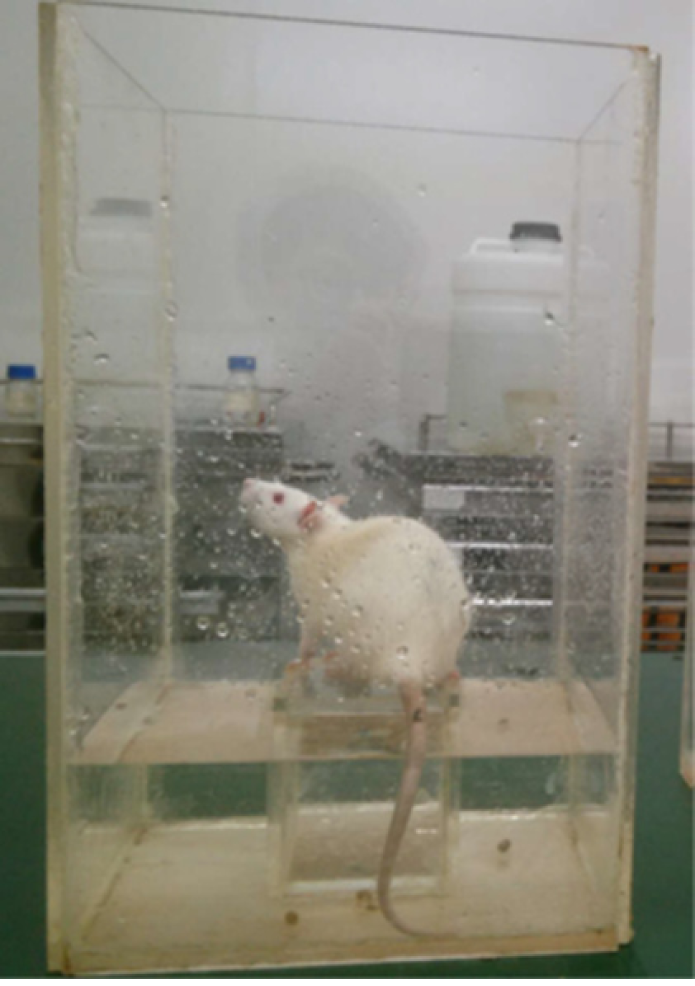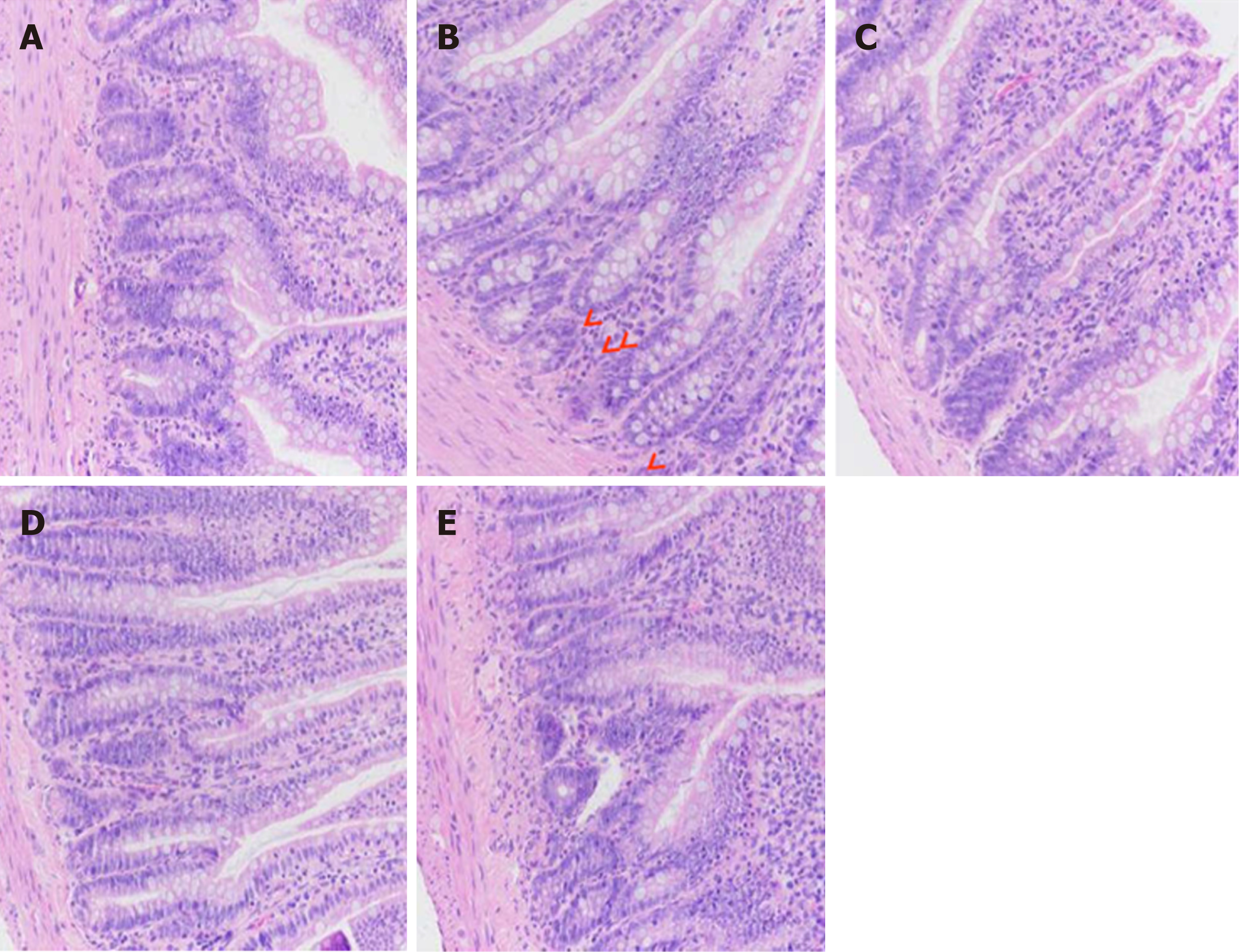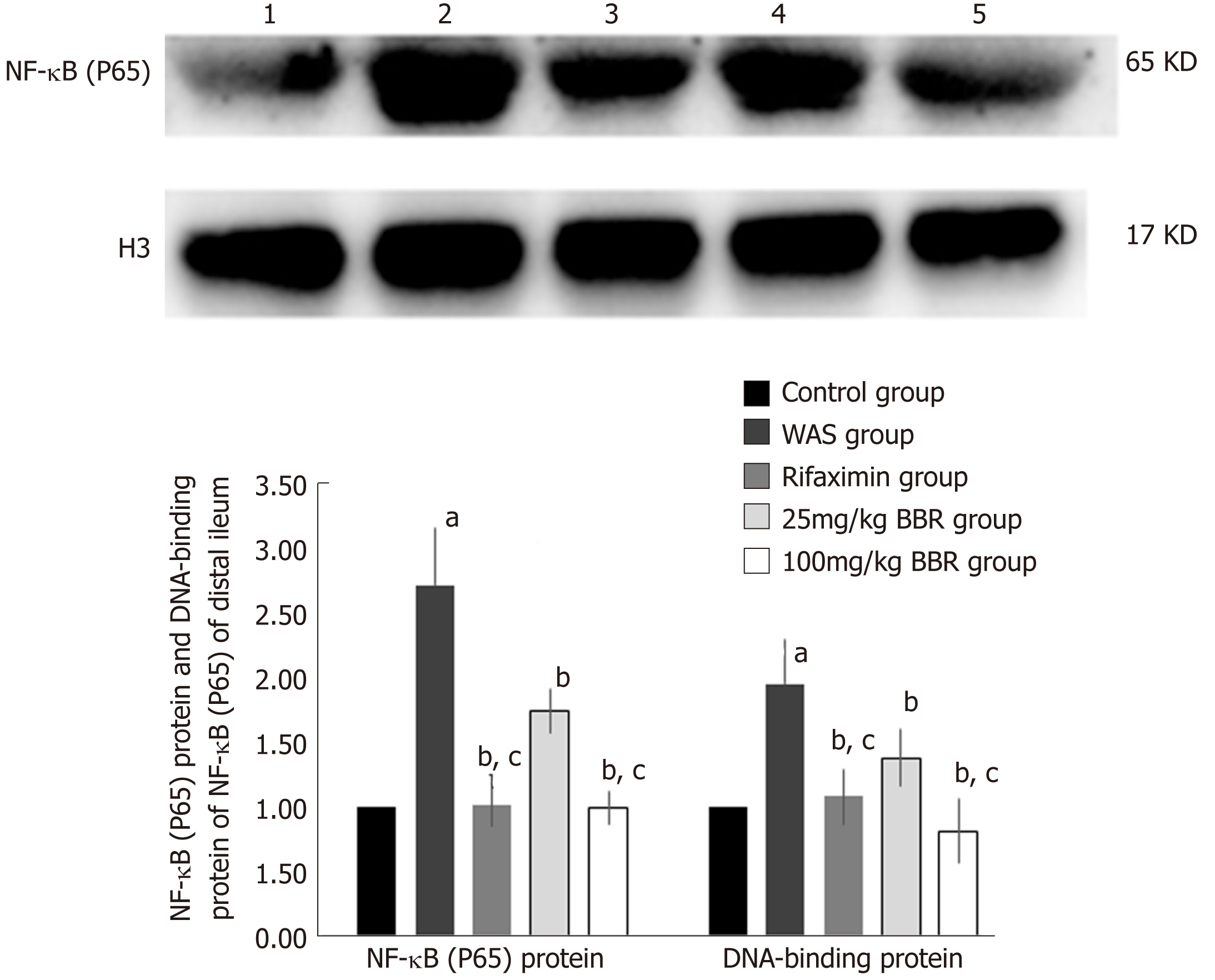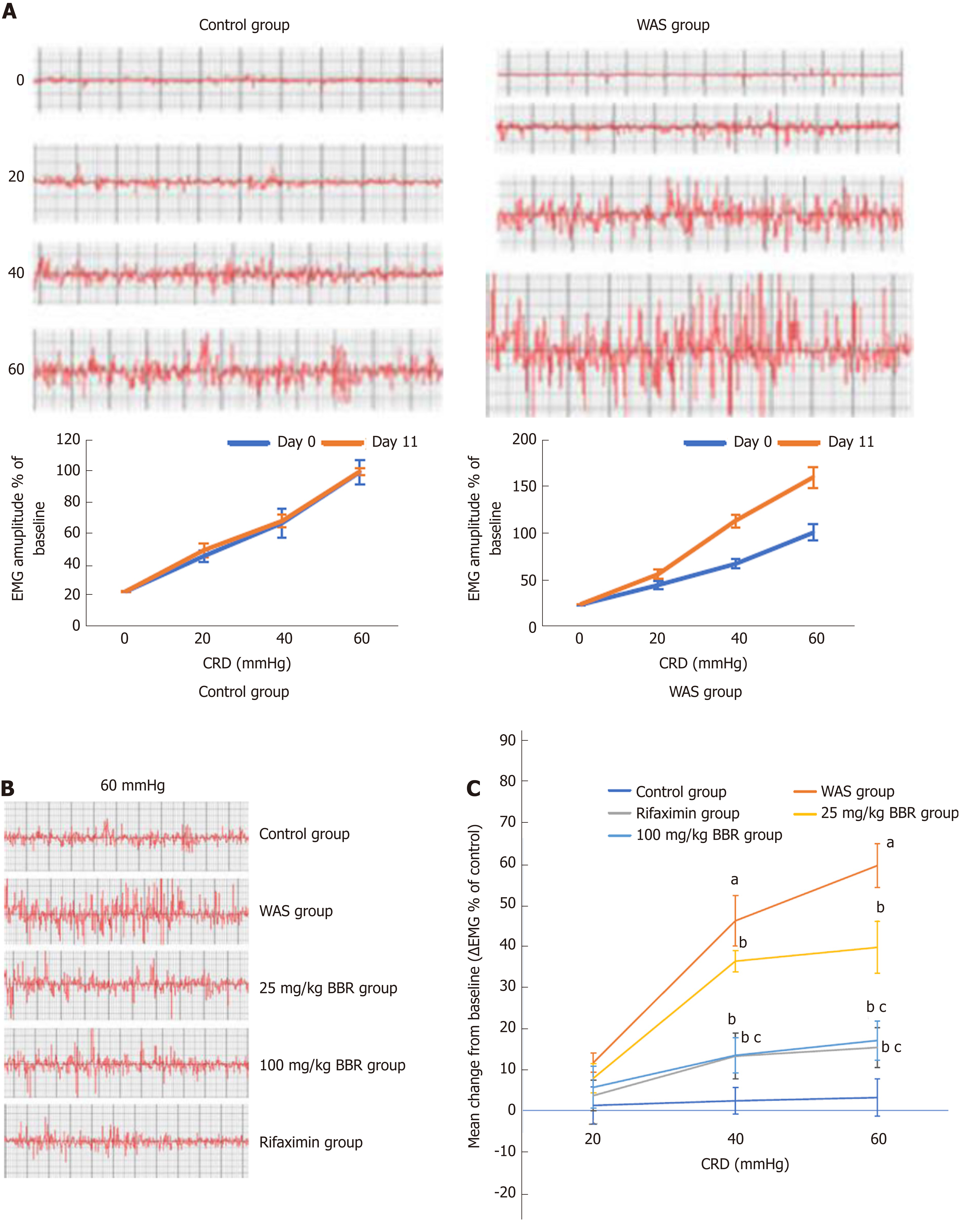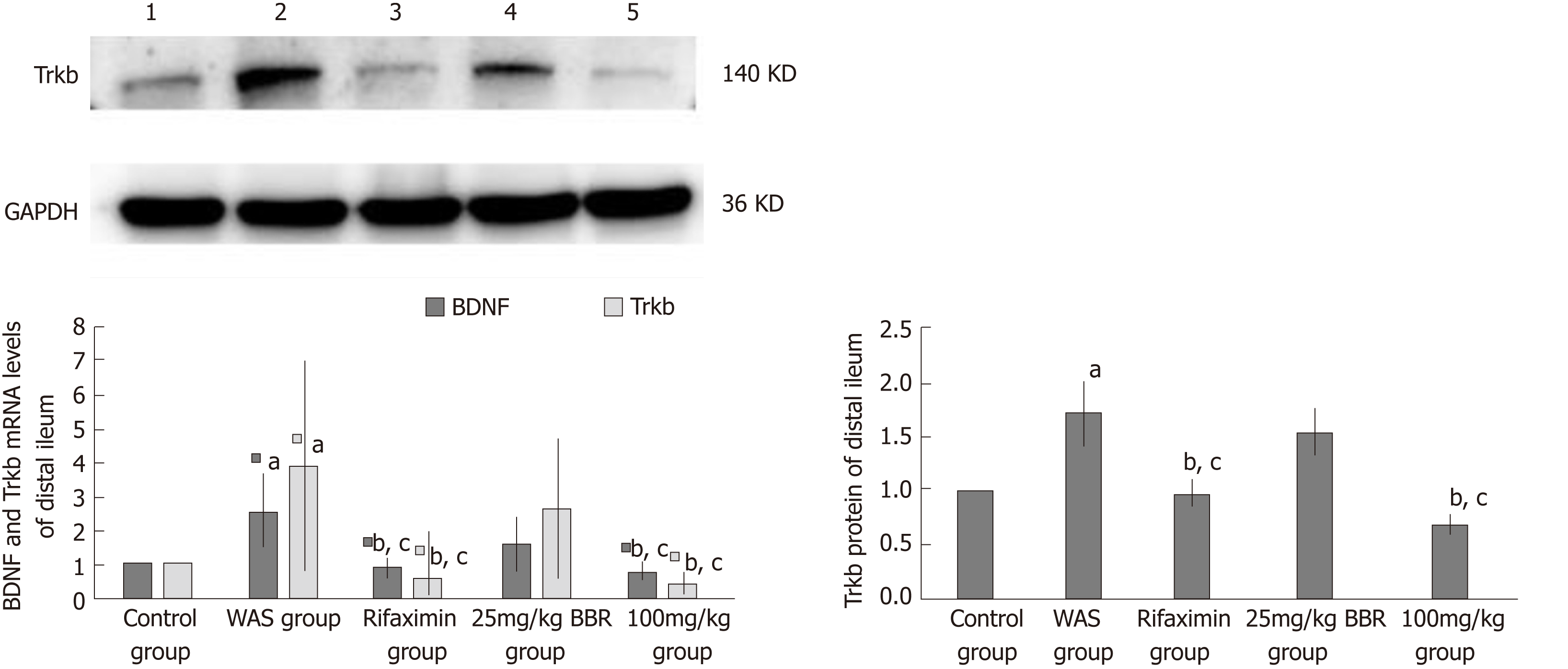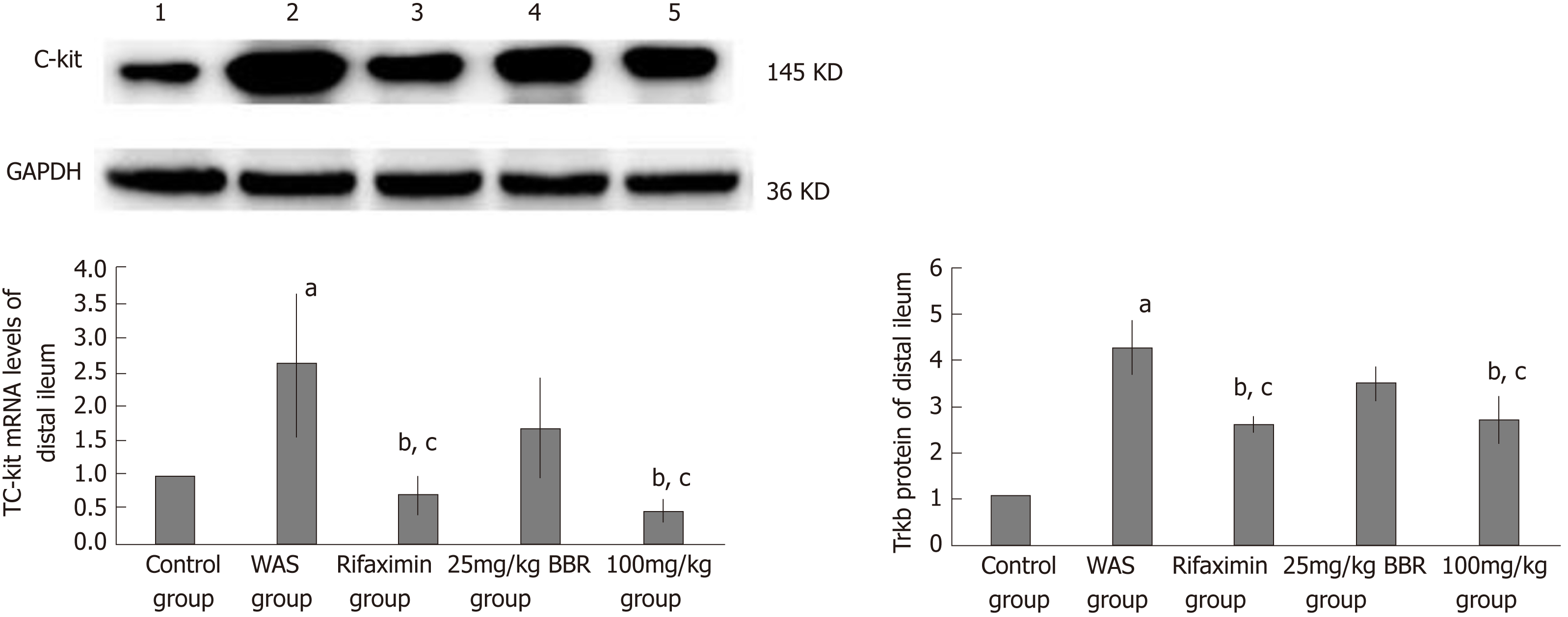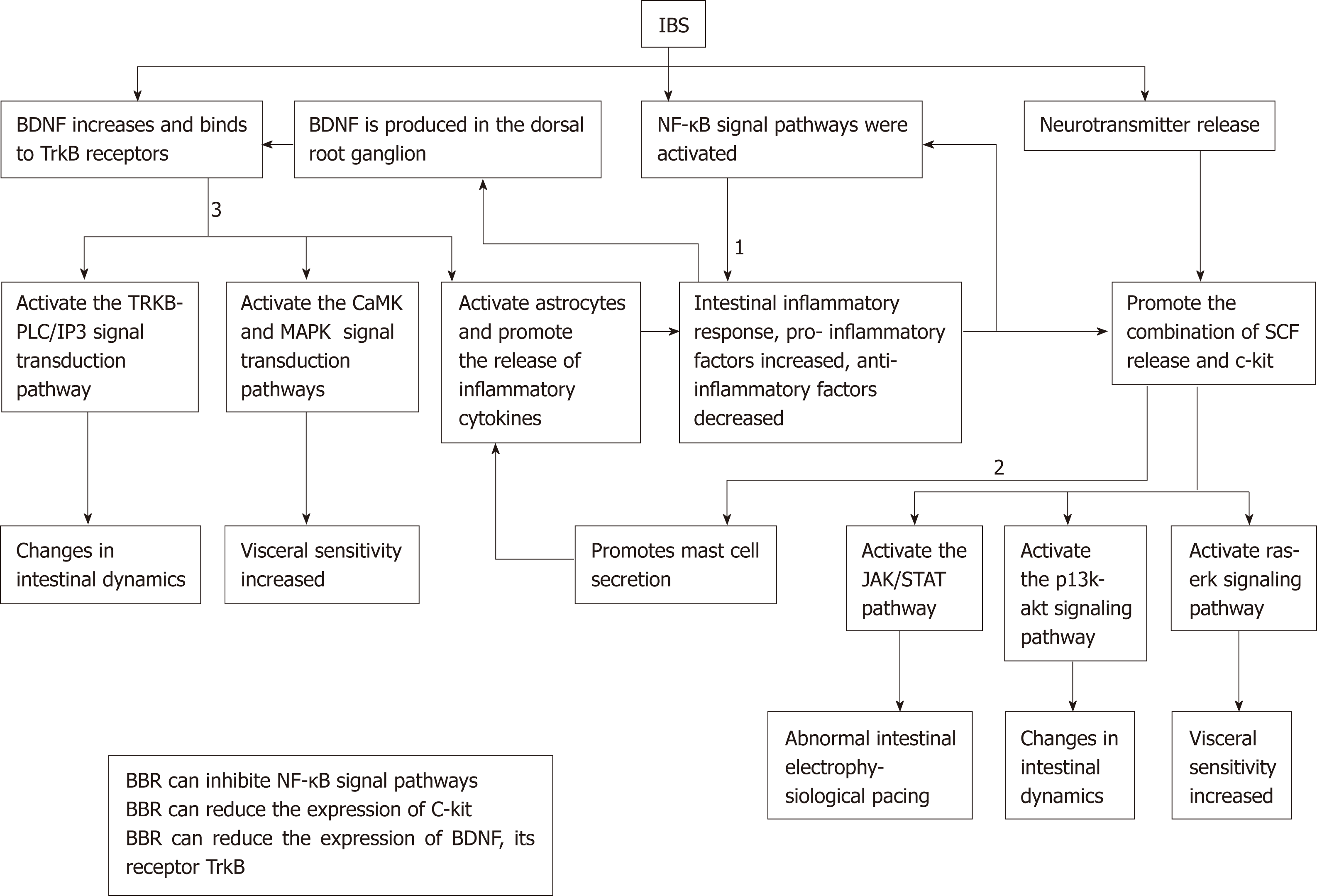Copyright
©The Author(s) 2019.
World J Gastroenterol. Aug 7, 2019; 25(29): 3956-3971
Published online Aug 7, 2019. doi: 10.3748/wjg.v25.i29.3956
Published online Aug 7, 2019. doi: 10.3748/wjg.v25.i29.3956
Figure 1 A rat model of irritable bowel syndrome was established by using water avoidance stress.
Figure 2 Effects of berberine on histological score of the distal intestine in rats (×200).
A: Control group; B: Water avoidance stress group; C: Rifaximin group; D: 25 mg/kg berberine (BBR) group; E: 100 mg/kg BBR group (the labeled cells are neutrophils). Compared with the control group (A), rats in the water avoidance stress (WAS) group (B) showed low-grade intestinal inflammatory reaction. Microscopically, the tissues of the terminal ileum were intact, the mucosal structure and epithelium were intact, and the crypt was intact. Compared with the WAS group, after treatment with rifaximin (C), 25 mg/kg BBR (D), or 100 mg/kg BBR (E), the tissues of the terminal ileum of rats were intact, the mucosal structure and epithelium were intact, the crypt was intact, and no obvious neutrophil infiltration was observed. WAS: Water avoidance stress; BBR: Berberine.
Figure 3 Effects of berberine on NF-κB (P65) protein and NF-κB (P65) DNA-binding protein expression.
Expression of NF-κB (P65) protein and DNA-binding protein of NF-κB in 1: Control group; 2: Water avoidance stress (WAS) group; 3: Rifaximin group; 4: 25 mg/kg berberine (BBR) group; 5: 100 mg/kg BBR group. Letters a, b, and c: P < 0.05 compared with those in the control group, WAS group, and 25 mg/kg BBR group, respectively. WAS: Water avoidance stress; BBR: Berberine.
Figure 4 Effects of berberine on cytokine mRNA levels.
Cytokine mRNA levels in the control group, water avoidance stress (WAS) group, rifaximin group, 25 mg/kg berberine (BBR) group, and 100 mg/kg BBR group are shown. Letters a, b, c, and d: P < 0.05 compared with those in the control group, WAS group, 25 mg/kg BBR group, and rifaximin group, respectively. WAS: Water avoidance stress; BBR: Berberine; IL: Interleukin; IFN: Interferon; TNF-α: Tumor necrosis factor-α; TGF-β: Transforming growth factor-β.
Figure 5 Effects of berberine on cytokine protein levels.
Cytokine protein levels in the control group, water avoidance stress (WAS) group, rifaximin group, 25 mg/kg berberine (BBR) group, and 100 mg/kg BBR group are shown. Letters a, b, c, and d; P < 0.05 compared with those in the control group, WAS group, 25 mg/kg BBR group, and rifaximin group, respectively. WAS: Water avoidance stress; BBR: Berberine; IL: Interleukin; IFN: Interferon; TNF-α: Tumor necrosis factor-α; TGF-β: Transforming growth factor-β.
Figure 6 Effects of berberine on visceromotor response to colorectal distention in rats.
We took the average EMG amplitude measured on day 11 subtracted by the average EMG amplitude detected on day 0, and express it as △EMG. A: The amplitude of electromyogram (EMG) was changed in the control group and water avoidance stress (WAS) group under different pressures of colorectal distention (CRD); B: The amplitude of EMG in the control group, WAS group, rifaximin group, 25 mg/kg berberine (BBR) group, and 100 mg/kg BBR group under 60 mmHg of CRD on day 11; C: △EMG of different group rats under different pressures of CRD. Letters a, b, and c: P < 0.05 compared with those in the control group, WAS group, and 25 mg/kg BBR group, respectively. WAS: Water avoidance stress; BBR: Berberine; CRD: Colorectal distention; EMG: Electromyogram.
Figure 7 Effects of berberine on total gastrointestinal transit and small intestinal transit.
Total gastrointestinal transit and small intestinal transit in the control group, water avoidance stress (WAS) group, rifaximin group, 25 mg/kg berberine (BBR) group, and 100 mg/kg BBR group are shown. Letters a, b, and c: P < 0.05 compared with those in the control group, WAS group, and 25 mg/kg BBR group, respectively. WAS: Water avoidance stress; BBR: Berberine.
Figure 8 Effects of berberine on brain derived neurotrophic factor and Trkb mRNA and protein expression.
Expression of brain derived neurotrophic factor and Trkb mRNA and protein in 1: control group; 2: water avoidance stress (WAS) group; 3: rifaximin group; 4: 25 mg/kg berberine (BBR) group; and 5: 100 mg/kg BBR group. Letters a, b, and c: P < 0.05 compared with those in the control group, WAS group, and 25 mg/kg BBR group, respectively. BDNF: Brain derived neurotrophic factor; WAS: Water avoidance stress; BBR: Berberine.
Figure 9 Effects of berberine on C-kit mRNA and protein expression.
Expression of C-kit mRNA and protein in 1: control group; 2: water avoidance stress (WAS) group; 3: rifaximin group; 4: 25 mg/kg berberine (BBR) group; and 5: 100 mg/kg BBR group. Letters a, b, and c: P < 0.05 compared with those in the control group, WAS group, and 25 mg/kg BBR group, respectively. WAS: Water avoidance stress; BBR: Berberine.
Figure 10 Relationship among NF-kB signaling, brain derived neurotrophic factor, and C-kit and the underlying role of berberine.
IBS: Irritable bowel syndrome; BDNF: Brain derived neurotrophic factor; SCF: Stem cell factor.
- Citation: Yu ZC, Cen YX, Wu BH, Wei C, Xiong F, Li DF, Liu TT, Luo MH, Guo LL, Li YX, Wang LS, Wang JY, Yao J. Berberine prevents stress-induced gut inflammation and visceral hypersensitivity and reduces intestinal motility in rats. World J Gastroenterol 2019; 25(29): 3956-3971
- URL: https://www.wjgnet.com/1007-9327/full/v25/i29/3956.htm
- DOI: https://dx.doi.org/10.3748/wjg.v25.i29.3956













